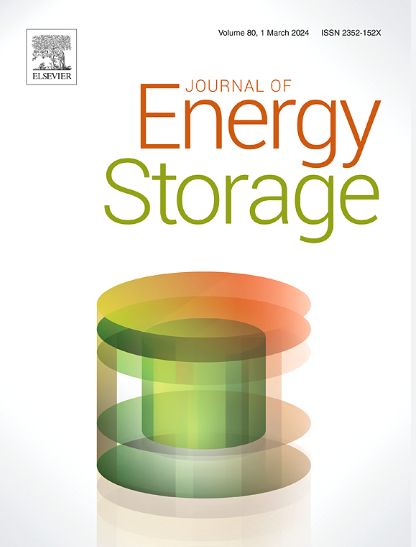一种用于锂离子电池容量轨迹预测的融合扩展长短期记忆学习架构
IF 8.9
2区 工程技术
Q1 ENERGY & FUELS
引用次数: 0
摘要
锂离子电池的容量是电池管理系统(BMS)的重要指标,准确的容量预测是保证电池系统可靠、安全运行的关键。传统的深度学习方法往往难以克服时间序列建模的固有局限性,这使得准确识别诸如容量再生等现象具有挑战性。为了解决这个问题,本文介绍了一种预测锂电池容量轨迹的新方法,利用数据预处理和扩展长短期记忆(LSTM)网络的融合。首先,我们采用连续变分模态分解(SVMD)对电池容量老化曲线进行预处理,将其分解为内禀模态函数(IMFs)和残差。然后对这些数据采用滑动窗口技术。将变化的IMF数据输入到扩展的LSTM网络中,以方便精确的时间序列建模,而将平滑下降的残差数据输入到更快的门控循环单元中,以提高预测效率。这种双目标学习方法可以有效地捕捉电池容量趋势,即使在存在容量再生现象和显著拐点的情况下也是如此。利用NASA和MIT的数据集进行了大量的实验,结果表明,所提出的方法成功地预测了电池容量轨迹。值得注意的是,与最先进的方法相比,我们的方法实现了平均绝对误差(MAEs)和均方根误差(rmse)的平均分别降低了60.44%和62.85%。本文章由计算机程序翻译,如有差异,请以英文原文为准。
A fusion extended long short-term memory learning architecture for capacity trajectory prediction of Li-ion battery
The capacity of lithium-ion batteries is a critical indicator for battery management systems(BMS), and accurate capacity prediction is essential for ensuring the reliable and safe operation of battery systems. Traditional deep learning methods often struggle to overcome the inherent limitations of time-series modeling, making it challenging to accurately identify phenomena such as capacity regeneration. To address this issue, this paper introduces a novel approach for predicting lithium battery capacity trajectories, leveraging data preprocessing and the fusion of extended Long Short-Term Memory(LSTM) networks. Initially, we apply the successive variational modal decomposition(SVMD) to preprocess the battery capacity aging curve, which is decomposed into intrinsic mode functions(IMFs) and residuals. A sliding window technique is then employed on these data. The varying IMF data is inputted into the extended LSTM network to facilitate accurate time-series modeling, while the smoothly decreasing residual data is fed into a faster Gated Recurrent Unit to enhance prediction efficiency. This dual-target learning approach effectively captures battery capacity trends, even in the presence of capacity regeneration phenomena and significant inflection points. Extensive experiments are conducted using the NASA and MIT datasets, and the results demonstrate that the proposed method successfully predicts battery capacity trajectories. Notably, compared to state-of-the-art methods, our approach achieves reductions in mean absolute errors(MAEs) and root mean square errors(RMSEs) by an average of 60.44% and 62.85%, respectively.
求助全文
通过发布文献求助,成功后即可免费获取论文全文。
去求助
来源期刊

Journal of energy storage
Energy-Renewable Energy, Sustainability and the Environment
CiteScore
11.80
自引率
24.50%
发文量
2262
审稿时长
69 days
期刊介绍:
Journal of energy storage focusses on all aspects of energy storage, in particular systems integration, electric grid integration, modelling and analysis, novel energy storage technologies, sizing and management strategies, business models for operation of storage systems and energy storage developments worldwide.
 求助内容:
求助内容: 应助结果提醒方式:
应助结果提醒方式:


